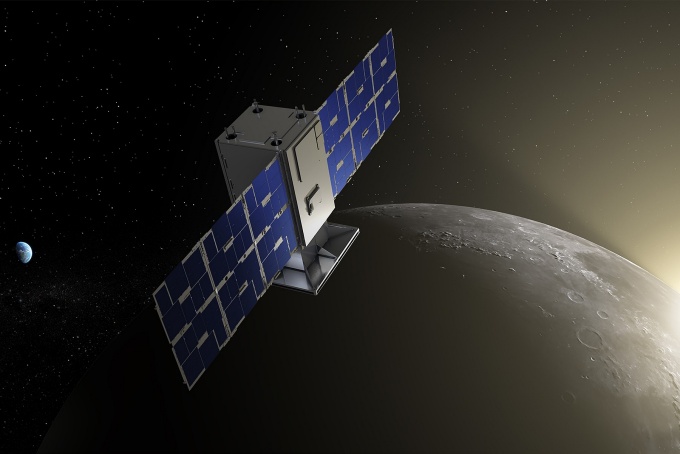Here is how we design the Earth’s thinnest materials for space tech
UB receives $2.4 million grant to apply 2D materials to satellite sensors, cosmic radiation shields and more

The United States Air Force has chosen the University at Buffalo to lead an international effort to leverage the thinnest materials on Earth into space technology, such as satellite sensors, cosmic radiation shields and quantum computing.
Funded by a $2.4 million grant from the Air Force Office of Scientific Research (AFOSR), the team aims to use AI and quantum science to design and discover 2D materials, which consist of just a single layer of atoms and are incredibly strong and highly conductive.
The researchers will focus on 2D materials that contain ions of rare earth elements known as lanthanide, whose properties could be used for energy storage, electromagnetic interference shielding and photocatalysis. With properties tailored to the extreme conditions of space, the materials could potentially redirect electromagnetic fields and protect against ionizing radiation.
The results will provide insight into how the materials can be used for multiple functions in space, from quantum communications to harvesting high energy radiation for fuel.
“This project addresses currently unmet needs in space exploration, research and commercialization, while also improving our fundamental understanding of 2D materials’ unique properties and interactions,” said the project’s principal investigator, Paras Prasad, SUNY Distinguished Professor in the UB Department of Electrical Engineering and executive director of UB’s Institute for Lasers, Photonics, and Biophotonics.
An International Effort
Co-principal investigators from UB include Fei Yao, assistant professor in the Department of Material Design and Innovation, a joint program of the School of Engineering and Applied Sciences and the College of Arts and Sciences; Mark Swihart, SUNY Distinguished Professor and chair of the Department of Chemical and Biological Engineering; Vasili Perebeinos, professor of electrical engineering; and Huamin Li, assistant professor of electrical engineering.
Other collaborators represent Michigan State University, North Carolina Agricultural and Technical State University, KTH Royal Institute of Technology and Indian Institute of Technology Delhi.
“I'm confident that the UB-led, world-class team’s deep research capabilities will lead to new ways to test and evaluate new materials that can exploit physics of the high-energy radiation for advanced space-based sensing, communications and radiation protection,” says AFOSR program officer John Luginsland.

